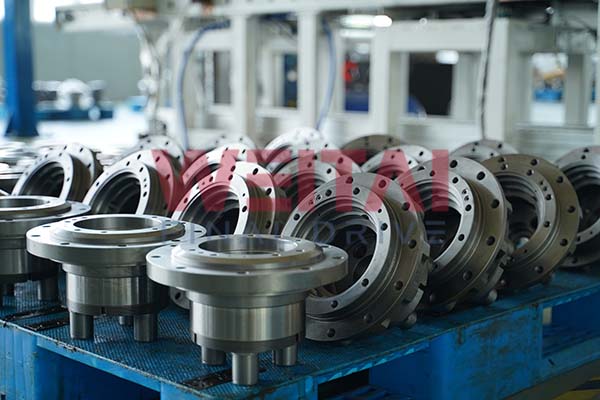In the world of construction, efficiency and power are paramount. Among the many components that contribute to a machine’s performance, the final drive motor plays a crucial role. This often-overlooked component is essential for the operation of tracked vehicles, such as excavators, bulldozers, and skid steers. In this post, we will delve into what a final drive motor is, how it functions, and why it’s vital for construction equipment.
________________________________________
What is a Final Drive Motor?
The final drive motor is a mechanical device that converts hydraulic or electric energy into rotational motion, ultimately driving the tracks or wheels of a construction vehicle. It acts as the last step in the transmission system, delivering the necessary torque and speed required for mobility. Typically, final drive motors can be classified into two main types: hydraulic and electric, each suited to specific applications.

________________________________________
How Does a Final Drive Motor Work?
1. Energy Conversion
• Hydraulic Motors: In hydraulic final drive motors, pressurized hydraulic fluid from a pump is directed into the motor. The flow of fluid causes pistons or gears to rotate, generating torque that turns the final drive shaft.
• Electric Motors: Electric final drive motors use electrical energy, typically from batteries or generators, to power the motor. This energy is converted into mechanical motion, allowing for precise control and efficient operation.
2. Torque and Speed Regulation
The final drive motor is responsible for controlling the speed and torque transmitted to the vehicle’s tracks or wheels. By adjusting the hydraulic fluid flow or electric current, operators can manage the machine’s speed and power output, making it easier to navigate different terrains and perform various tasks.
3. Integration with Other Components
Final drive motors work in conjunction with other essential components, including the transmission, hydraulic systems, and control systems. This integration allows for seamless operation and enhances the overall efficiency of the machinery.
________________________________________
Importance of the Final Drive Motor in Construction Equipment
1. Mobility and Maneuverability
The final drive motor is key to a machine’s ability to move effectively. Whether it’s traversing rough terrain or executing tight turns, the final drive motor ensures that tracked vehicles maintain traction and stability. This mobility is crucial for a variety of construction tasks, from excavation to material handling.
2. Power Delivery
Final drive motors provide the necessary power to handle heavy loads. They enable machines to dig, lift, and transport materials with ease, ensuring that construction projects progress smoothly and efficiently. The ability to generate high torque allows machines to tackle challenging jobs that would be impossible without adequate power.
3. Precision Control
In construction, precision is vital. Final drive motors allow for fine control over movement, making it easier for operators to perform tasks that require accuracy, such as grading, digging, or placing materials. This level of control minimizes the risk of errors and enhances overall productivity.
4. Durability and Reliability
Construction equipment often operates in harsh conditions, including extreme temperatures, dust, and moisture. Final drive motors are designed to withstand these challenges, offering durability and reliability. A well-functioning final drive motor ensures that machinery can operate effectively over extended periods, reducing downtime and maintenance costs.
________________________________________
Maintaining Your Final Drive Motor
To ensure optimal performance, regular maintenance of the final drive motor is essential. Here are some key maintenance tips:
• Regular Inspections: Frequently check for signs of wear, such as leaks or unusual noises.
• Hydraulic Fluid Monitoring: Ensure that hydraulic fluid levels are appropriate and that the fluid is clean.
• Seal Checks: Inspect seals and gaskets for wear and replace them as needed to prevent leaks.
• Temperature Monitoring: Keep an eye on operating temperatures; overheating can indicate underlying issues.
________________________________________
Conclusion: The Backbone of Construction Mobility
The final drive motor is an integral component of construction equipment, providing the power, mobility, and control necessary for efficient operation. Understanding its role can help operators appreciate the importance of maintaining this critical part of their machinery. By investing time in proper care and maintenance, you can extend the lifespan of your final drive motor and ensure your construction projects run smoothly.
In an industry where every minute counts, ensuring that your equipment is functioning at its best is essential for success. Whether you’re involved in excavation, demolition, or any other construction task, a well-maintained final drive motor can make all the difference.
Post time: Sep-12-2024
